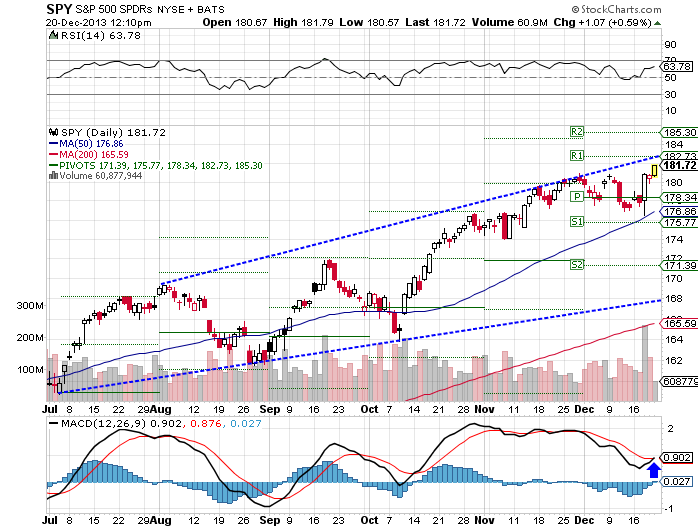The Dow Economic Sentiment Index Supports A Higher Market SPDR Dow Jones Industrial Average ETF
Post on: 28 Июнь, 2015 No Comment

Summary
- The Dow (DIA) is 3.45% below its all-time high.
- The Dow is down 0.04% YTD.
- The Dow Jones Economic Sentiment Indicator (ESI) is in the center of its historical range.
While the Dow is 3.5% Off a Record High, the Dow Economic Sentiment Index is Far Below Past Highs
On Thursday July 17, 2014, the Dow Jones Industrial Average (DOW with ETF DIA ) reached an all-time record high of 17,151.56. Fifteen days later on Friday August 1, the Dow was down 4.2% from that high and down half a percent for the year. After a 0.46% rally today, the Dow is virtually flat for the year down only 0.04%. When you add dividends to the Dow, my chart of DIA shows the DOW with dividends reinvested is up 1.08% for the year.
Is the DOW at a major turning point for another major bear market or is this a correction that should be bought?
I believe major tops come when most of the news is good and the general public, that follows the Dow instead of the more diversified S&P500 (NYSEARCA:SPY ), is celebrating their success with positive news stories. For example, during the March 2000 top most of the stories were about how much money regular people were making in technology stocks. During the 2007 market high before the worst bear market since the Great Depression, newspapers were full of stories about investors flipping houses, some bought over the internet, for large profits.
On Thursday July 31, 2014, Dow Jones Newswire reported the Dow Jones Economic Sentiment Indicator (ESI) fell slightly to 53.7 in July from a five-month high of 54.3 posted in June.
- The economic-sentiment indicator is designed to project the health of the U.S. economy by analyzing coverage of 15 major American newspapers, using a proprietary algorithm to look for positive and negative sentiment about the economy in every article.
- The ESI is reported on a scale of 0 to 100; higher numbers represent increasingly positive sentiment. Dow Jones selected the 15 newspapers used to compile the indicator because they include extensive original reporting on economic issues. They are also geographically diverse and represent eight of the 10 largest metropolitan areas in the U.S.
Chart 1 shows The Dow Jones ESI vs. the Dow index
Clearly, from the chart, ESI was above 70 for both the 2000 and 2007 market highs. (note the DOW peaked in December 1999 while the S&P500 didn’t peak until March 2000.)
If you throw out the buy of a lifetime in late 2008 and early 2009 when the ESI plunged to the low 20s, ESI typically moves between mid-30s and low 70s. The current level of 53.7 is roughly in the center of that range.
Chart 2 shows The Dow Jones ESI vs. the S&P500 index
Fundamentals. I’ve written many articles at Seeking Alpha about how leading index fundamentals for the economy were supportive of stocks. In my February 2011 article How to Play Expected Inflation from the TIPS Spread , I wrote I was long SPY, as one way to benefit from expected inflation. I also believe it is a good time to own equities including SPY, the exchange traded fund for the S&P 500, for both inflation protection and income. In my most recent article, July 28, 2014, I said I remained long SPY in SPY Sets Another Record High While ECRI’s WLI Is Just Below A 6.3-Year High . So, fundamentally, I believe we are in good shape with slow economic growth and moderate inflation which are BOTH good for stocks.
Past Corrections. Chart 1 shows the two largest corrections this year prior to the recent 4.17% correction were 3.8% and 7.6%.
Chart 3 Shows the DJIA YTD through August 4, 2014
Table 1: Raw data for the Dow
Conclusions:
- The Economic Sentiment Index is nowhere near levels seen at the last two major highs.
- Slow economic growth is good for stocks.
- Valuations, while not cheap, are not over valued when compared to alternatives such as bonds or cash in savings accounts.
- I remain long with SPY (or its index fund equivalent) in my recommended newsletter portfolios.
What do you think?
Chart 4 Dow, DIA & SPY from 1994 through today.














